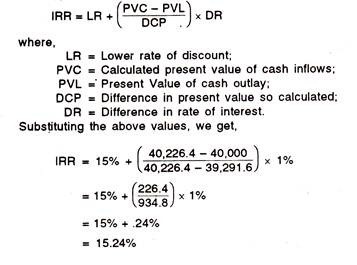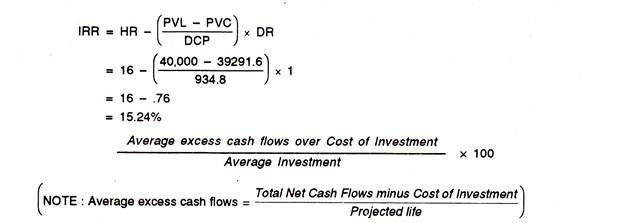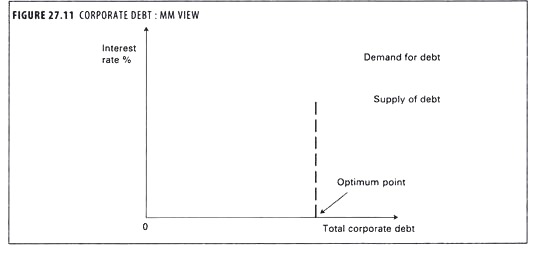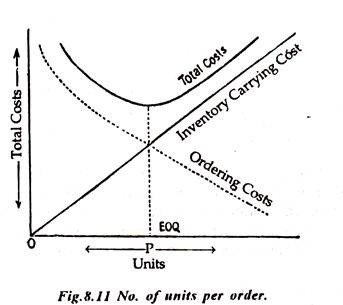In this article we will discuss about horizontal and vertical forms of balance sheet.
Horizontal Form of Balance Sheet:
According to Section 210 of the Companies Act a Company is required to prepare a Balance Sheet at the end of each trading period. Section 211 requires the Balance Sheet to be set up in the prescribed form. And it shall give a true and fair view of the state of affairs of the Company. We reproduce the form of Balance Sheet as prescribed under the Act.
Notes:
ADVERTISEMENTS:
(1) Paise can also be given in addition to Rupees, if desired.
(2) Dividends declared by subsidiary companies after the date of the balance sheet should not be included unless they are in respect of a period which closed on or before the date of the balance sheet.
(3) Any reference to benefits expected from contacts to the extent not executed shall not be made in the balance sheet but shall be made in the Board’s report.
ADVERTISEMENTS:
(4) Particulars of any redeemed debentures which the company has power to issue should be given.
(5) Where any of the company’s debentures are held by a nominee or a trustee for the company, the nominal amount of the debentures and the amount at which they are stated in the books of the company shall be stated.
(6) A statement of investments (whether shown under “Investments” or under “Current Assets” as Stock-in-Trade) separately classifying trade investments and other investments should be annexed to the balance sheet, showing the names of the bodies corporate (including separately the names of the bodies corporate under the same management) in whose shares or debentures, investments have been made (including all investments, whether existing or not, made subsequent to the date as at which the previous balance sheet was made out) and the nature and extent of the investments so made in each such body corporate; provided that in the case of an investment company, that is to say, a company whose principal business is the acquisition of shares, stock, debentures or other securities, it shall be sufficient if the statement shows only the investments existing on the date as at which the balance sheet has been made out. In regard to the investments in the capital of partnership firms, the names of the firms (with the names of all their partners, total capital and the shares of each partner) shall be given in the statement.
(7) If, in the opinion of the Board, any of the current assets, loans and advances have not a value on realisation in the ordinary course of business at least equal to the amount at which they are stated, the fact that the Board is of that opinion shall be stated.
ADVERTISEMENTS:
(8) Except in the case of the first balance sheet laid before the company after the commencement of the Act, the corresponding amounts of the immediately preceding financial year for all items shown in the balance sheet shall be also given in the balance sheet. The requirement in this behalf shall, in case of companies preparing quarterly or half-yearly accounts, etc. relate to the balance sheet for the corresponding date in the previous year.
(9) Current accounts with Directors and Manager, whether they are in credit or debit, shall be shown separately.
(10) The information required to be given under any of the items or sub-items in the Form, if it cannot be conveniently included in the balance sheet itself, shall be furnished in a separate Schedule or Schedules to be annexed to and form part of the balance sheet. This is recommended when items are numerous.
(11) Where the original cost (of fixed assets) and additions and deductions thereto, relate to any fixed asset which has been acquired from a country outside India, and in consequence of a change in the rate of exchange at any time after the acquisition of such assets, there has been an increase or reduction in the liability of the company, as expressed in Indian currency, for making payment towards the whole or a part of the cost of the asset, or for repayment of the whole or a part of the cost of the asset, or for repayment of the whole or a part of money borrowed by the company from any person, directly or indirectly, in any foreign currency specifically for the purpose of acquiring the asset (being in either cases the liability existing immediately before the date on which the change in the rate of exchange takes effect), the amount by which the liability is so increased or reduced during the year, shall be added to, or as the case may be, deducted from the cost, and the amount arrived at after such addition or deduction shall be taken to be the cost of the fixed assets.
ADVERTISEMENTS:
Explanation 1:
This paragraph shall apply in relation to all balance sheets that may be made out as the 6th day of June, 1966, or any day thereafter and where, at the date of issue of the notification of the Government of India, in the Ministry of Industrial Development and Company Affairs (Department of Company Affairs), G.S.R. No. 129, dated the 3rd day of January, 1968, any balance sheet in relation to which the paragraph applies, has already been made out and laid before the company in annual general meeting, the adjustment referred to in this paragraph may be made in the first balance sheet made out after the issue of the said notification.
Explanation 2:
In this paragraph, unless the context otherwise requires, the expression “rate of exchange”, “Foreign currency” and “Indian currency” shall have the meanings respectively assigned to them under sub-section (1) of section 43A of the Income-tax Act, 1961 (XLII of 1961), and Explanation 3 of the said sub-section shall as far as may apply in relation to the said paragraph as they apply to the said sub-section (1).
Vertical Form of Balance Sheet:
ADVERTISEMENTS:
By a notification dated 23rd December, 1978, the Government have permitted companies to prepare the balance sheet either in the horizontal form as given earlier, or in the vertical form. The latter form is given below as per the notification.
Name of the Company ……………………………….
Balance Sheet as at ……………………………….
1. Details under each of the items in vertical Balance Sheet shall be given in separate schedules.
2. The schedules referred to above, accounting policies and explanatory notes that may be attached shall form an integral part of the Balance Sheet.
3. The figures in the Balance Sheet may be rounded off to the nearest ‘000 or ’00 as may be convenient or may be expressed in terms of decimals of thousands.
4. A footnote to the Balance Sheet may be added to show separately contingent liabilities.
Schedule VI Part III
Interpretation:
ADVERTISEMENTS:
1. For the purpose of Parts I and II of this Schedule, unless the context otherwise requires:
(a) The expression “provision” shall, subject to sub-clause (2) of this clause, mean any amount written off or retained by way of providing for depreciation, renewals or diminution in value of assets, or retained by way of providing for any known liability of which the amount cannot be determined with substantial accuracy;
(b) The expression “reserve” shall not, subject as aforesaid, include any amount written off or retained by way of providing for depreciation, renewals or diminution in value of assets or retained by way of providing for any known liability; and
(c) The expression ‘capital reserve’ shall not include any amount regarded as free for distribution through the profit and loss account; and the expression “revenue reserve” shall mean any reserve other than a capital reserve; and in this sub-clause the expression “liability” shall include all liabilities in respect of expenditure contracted for and all disputed or contingent liabilities.
2. Where:
(a) Any amount written off or retained by way of providing for depreciation, renewals or diminution in value of assets, not being an amount written off in relation to fixed assets before the commencement of this Act; or
(b) Any amount retained by way of providing for any known liability; is in excess of the amount which in the opinion of the directors is reasonably necessary for the purpose, the excess shall be treated for the purposes of this schedule as a reserve and not as a provision.
For the purposes aforesaid, the expression “quoted investment” means an investment as respect which there has been granted a quotation or permission to deal on a recognized stock exchange, and the expression “unquoted investment” shall be constructed accordingly.








